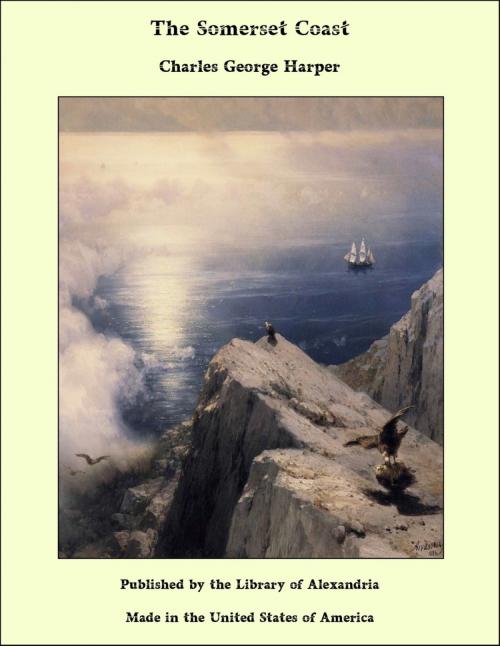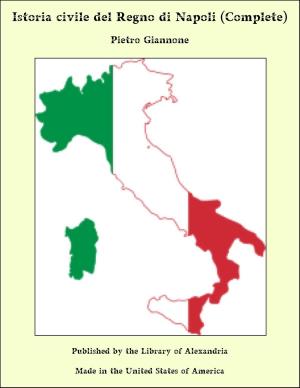| Author: | Charles George Harper | ISBN: | 9781465625731 |
| Publisher: | Library of Alexandria | Publication: | March 8, 2015 |
| Imprint: | Language: | English |
| Author: | Charles George Harper |
| ISBN: | 9781465625731 |
| Publisher: | Library of Alexandria |
| Publication: | March 8, 2015 |
| Imprint: | |
| Language: | English |
On confiding to personal friends, journalistic paragraphists, and other Doubting Thomases, professional sceptics, chartered cynics and indifferent persons, the important and interesting literary news that a proposal was afloat to write a book on the Somerset Coast, the author was assured with an unanimity as remarkable as it was disconcerting, that there is no coast of Somerset. This singular geographical heresy, although totally unsupported by map-makers, who on all maps and charts show a very well-defined seaboard, seems to be widely distributed; but it is not shared by (among others) the inhabitants of Clevedon, of Watchet (where furious seas have twice within the last few years demolished the harbour), of Weston-super-Mare, Burnham, Minehead, or Porlock. The people of all these places think they live on the coast; and it would be really quite absurdly difficult to persuade them that they do not, or that they do not live in Somerset. And so forth. Essex is flat, and London grimy, only comparatively. Natives of Huntingdonshire (which is an alternative term for flatness) no doubt think of Essex as a place of hills; and although London may seem grimy to the eyes of a villager from Devon or Cornwall, it is as a City of light and purity to the Sheffielder, the inhabitants of Newcastle, and the people of other such places of gloom. The coast of Somerset, then, to make a beginning with it, opens with the great port and city of Bristol, on the navigable estuary of the river Avon, and ends at Glenthorne, where the North Devon boundary is met. The distance between these two points is sixty miles. Throughout the entire length of this coastline, that of South Wales is more or less clearly visible; the Bristol Channel being but four and a half miles wide at Avonmouth; seven and a half miles at Brean Down, by Weston-super-Mare, and fifteen miles at Glenthorne. The foreshore of a great part of this coast is more or less muddy; the Severn, which you shall find to be a tea or coffee-coloured river, even at Shrewsbury a hundred miles or so up along its course, from the particles of earth held in suspension, depositing much of this, and the even more muddy rivers Avon and Parret contributing a larger proportion. The “Severn Sea,” as poetical and imaginative writers style this estuary, known to matter-of-fact geographers as the “Bristol Channel,” is therefore apt to be of a grey hue, except under brilliant sunshine. But it would be most unjust to infer from these remarks, that mud, and only mud, is the characteristic of these sixty miles. Indeed, the Somerset Coast is singularly varied, and has many elements of beauty. Between the noble scene of its opening, where the romantic gorge of the Avon, set with rugged cliffs and delightful woods, is spanned by the airy Suspension Bridge of Clifton, and the wood-clad steeps of Glenthorne, you will find such beautiful places as Portishead and Weston, whose scenery no crowds of vulgarians can spoil; and Dunster, Minehead, and Porlock, which need no advertisement from this or any other pen. I have purposely omitted Clevedon from the list above, for it does not appeal to me. Mud you have, naked and unashamed, practically only at Pill and the outlet of the Avon, and again at Steart and the estuary of the Parret, where those surcharged waters precipitate their unlovely burden. Elsewhere, the purifying sea completely scavenges it away or kindly disguises it. Nay, between Weston and Burnham we have even a long range of sandhills, as pure as the sand-towans of North Cornwall or as the driven snow.
On confiding to personal friends, journalistic paragraphists, and other Doubting Thomases, professional sceptics, chartered cynics and indifferent persons, the important and interesting literary news that a proposal was afloat to write a book on the Somerset Coast, the author was assured with an unanimity as remarkable as it was disconcerting, that there is no coast of Somerset. This singular geographical heresy, although totally unsupported by map-makers, who on all maps and charts show a very well-defined seaboard, seems to be widely distributed; but it is not shared by (among others) the inhabitants of Clevedon, of Watchet (where furious seas have twice within the last few years demolished the harbour), of Weston-super-Mare, Burnham, Minehead, or Porlock. The people of all these places think they live on the coast; and it would be really quite absurdly difficult to persuade them that they do not, or that they do not live in Somerset. And so forth. Essex is flat, and London grimy, only comparatively. Natives of Huntingdonshire (which is an alternative term for flatness) no doubt think of Essex as a place of hills; and although London may seem grimy to the eyes of a villager from Devon or Cornwall, it is as a City of light and purity to the Sheffielder, the inhabitants of Newcastle, and the people of other such places of gloom. The coast of Somerset, then, to make a beginning with it, opens with the great port and city of Bristol, on the navigable estuary of the river Avon, and ends at Glenthorne, where the North Devon boundary is met. The distance between these two points is sixty miles. Throughout the entire length of this coastline, that of South Wales is more or less clearly visible; the Bristol Channel being but four and a half miles wide at Avonmouth; seven and a half miles at Brean Down, by Weston-super-Mare, and fifteen miles at Glenthorne. The foreshore of a great part of this coast is more or less muddy; the Severn, which you shall find to be a tea or coffee-coloured river, even at Shrewsbury a hundred miles or so up along its course, from the particles of earth held in suspension, depositing much of this, and the even more muddy rivers Avon and Parret contributing a larger proportion. The “Severn Sea,” as poetical and imaginative writers style this estuary, known to matter-of-fact geographers as the “Bristol Channel,” is therefore apt to be of a grey hue, except under brilliant sunshine. But it would be most unjust to infer from these remarks, that mud, and only mud, is the characteristic of these sixty miles. Indeed, the Somerset Coast is singularly varied, and has many elements of beauty. Between the noble scene of its opening, where the romantic gorge of the Avon, set with rugged cliffs and delightful woods, is spanned by the airy Suspension Bridge of Clifton, and the wood-clad steeps of Glenthorne, you will find such beautiful places as Portishead and Weston, whose scenery no crowds of vulgarians can spoil; and Dunster, Minehead, and Porlock, which need no advertisement from this or any other pen. I have purposely omitted Clevedon from the list above, for it does not appeal to me. Mud you have, naked and unashamed, practically only at Pill and the outlet of the Avon, and again at Steart and the estuary of the Parret, where those surcharged waters precipitate their unlovely burden. Elsewhere, the purifying sea completely scavenges it away or kindly disguises it. Nay, between Weston and Burnham we have even a long range of sandhills, as pure as the sand-towans of North Cornwall or as the driven snow.















